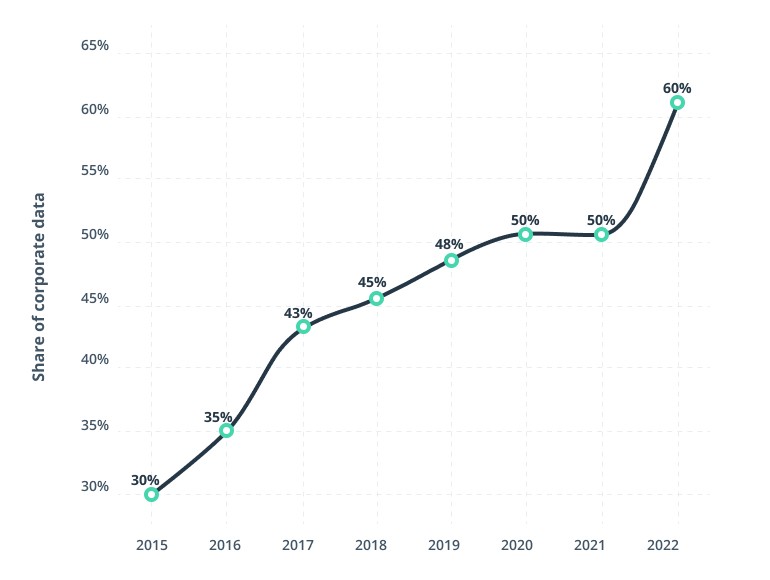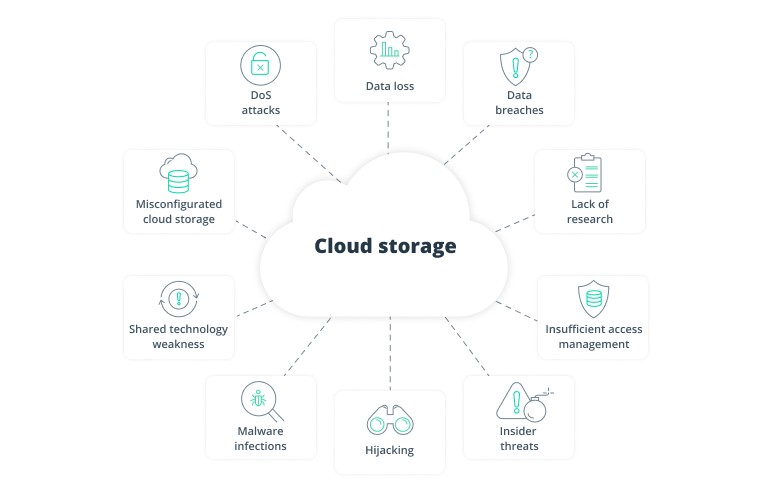Cloud computing in tourism is revolutionizing how travel businesses operate and deliver services. SIXT.VN is here to explore how cloud solutions can transform your travel experiences in Vietnam. This powerful technology offers scalability, cost-efficiency, and enhanced customer service, making it easier than ever to plan and enjoy your perfect trip. Embrace cloud-based solutions for seamless travel planning, personalized recommendations, and real-time support, ensuring a memorable journey in Vietnam.
1. What Business Benefits Does Cloud Computing Offer the Tourism Industry?
Cloud computing offers considerable cost savings, remarkable scalability, unmatched flexibility, centralized data management, better customer service, and improved security to the tourism industry. Switching to a cloud infrastructure eliminates significant upfront investments in servers, network hardware, and specialized software. According to a report by Research and Markets, online travel sales are projected to reach $1.8 trillion by 2025, driven by cloud innovation. Embrace these benefits to stay competitive and enhance your services.
- Considerable Cost Savings: Cloud infrastructure eliminates the need for significant upfront investments in servers and hardware.
- Remarkable Scalability: Dynamically scale operations up or down depending on demand.
- Unmatched Flexibility: Access systems 24/7 from anywhere, enabling remote work and collaboration.
- Centralized Data Management: Store data in a central location for better analysis and personalized customer experiences.
- Better Customer Service: Real-time access to customer information for improved service.
- Improved Security: Enhanced security features compared to traditional on-premise systems.
 Cloud Benefits in Tourism
Cloud Benefits in Tourism
2. How Does the Travel Public Cloud Accelerate Digital Business Innovation?
The travel public cloud accelerates digital business innovation by enabling businesses to move operations online, integrate with other travel solutions via APIs, and utilize modern storage and compute services. According to Zippia, 94% of enterprises use cloud services. This transition provides a competitive edge, allowing for better data processing, real-time predictive analysis, and AI-based interactions.
- Eliminating On-Prem Hardware: No need to support expensive, aging hardware infrastructure.
- Simplified Integration: Easier integration with other travel solutions via cloud APIs.
- Enhanced Data Processing: Modern storage and compute services improve data processing and forecasting.
- Improved Performance: Platform handles performance, security, and service availability.
- Global Scale: Users enjoy identical service performance worldwide.
- Seamless Development: Fast and seamless application development and deployment.
3. What Are the Most Important Elements of a Cloud Strategy for Travel Companies?
The most important elements of a cloud strategy for travel and tourism companies include defining the initial migration scope, matching expected cloud outcomes with business goals, and executing, measuring, analyzing, and optimizing. According to Accenture, only a fraction of travel companies have truly adopted the cloud as their primary avenue for future development. A balanced cloud strategy requires commitment and involvement of key personnel.
- Define Initial Migration Scope: Identify critical workloads to move to the cloud with high priority.
- Match Cloud Outcomes with Business Goals: Convince stakeholders of the necessity to migrate to the cloud.
- Execute, Measure, Analyze, Optimize: Implement a continuous improvement practice across the board.
4. What Are the Steps Required to Adopt a Public Cloud Model?
The steps required to adopt a public cloud model include defining the initial migration scope, matching expected cloud outcomes with the organization’s business goals, and executing, measuring, analyzing, and optimizing the process. These steps ensure a successful transition and implementation of cloud services across your travel company.
4.1. Step 1: Define the Initial Migration Scope
Identify critical workloads that should be moved to the cloud with the highest priority. This includes services responsible for user acquisition, retention, and core service delivery.
4.2. Step 2: Match Expected Cloud Outcomes with Business Goals
Convince stakeholders, including the IT department, of the necessity to migrate to the cloud. Highlight the innovation factor, flexibility, scalability, guaranteed service delivery, cost savings, and better security.
4.3. Step 3: Execute, Measure, Analyze, Optimize
Implement cloud management and DevOps services. Measure the effect of cloud migration after each iteration and regularly evaluate progress toward business goals.
5. What Are the Most Common Types of Cloud Computing and Cloud Services?
The most common types of cloud computing and cloud services are cloud management and cloud migration. Cloud management includes cloud provisioning, orchestration, governance, resource management, and optimization. Cloud migration covers building cloud-native applications, configuring ETL data pipelines, and integrating with other systems via APIs.
5.1. Cloud Management
Cloud management involves several distinct areas:
- Cloud Provisioning and Orchestration: Initial cloud architecture design, deployment of resources, and continuous monitoring.
- Cloud Governance: Security, compliance policies, and risk management.
- Cloud Resource Management and Optimization: Regular cloud audits to identify and eliminate excessive resources.
5.2. Cloud Migration
Cloud migration includes:
- Software engineering to build cloud-native applications.
- Configuration of ETL data pipelines for data collection and transformation.
- Integration with other systems via APIs.
6. How Do You Control and Optimize Cloud Costs for Your Travel Business?
To control and optimize cloud costs, regularly audit your cloud infrastructure to identify and eliminate excessive or inactive resources. Redesign workflows to be more efficient and cost-effective. According to industry experts, consistent cloud resource management is crucial, especially in the early stages of cloud deployment.
7. What are Cloud Security Challenges and How Can You Mitigate Them?
Cloud security challenges include cloud misconfiguration, intentional sabotage, compliance issues, and outside attacks. Mitigate these risks by implementing a multi-layered security approach with access control, encryption, monitoring, and regular security assessments.
 Cloud Security Risks
Cloud Security Risks
- Access Control: Limit user access to sensitive data and resources.
- Encryption: Use strong encryption to protect data at rest and in transit.
- Monitoring: Continuously monitor cloud environments for suspicious activity.
- Regular Security Assessments: Conduct regular assessments to identify vulnerabilities.
8. How Does Cloud Data Management Benefit Travel Companies?
Cloud data management ensures high availability of customer-facing applications and uninterrupted data flows from external sources. It also provides multi-tier security at all levels, enabling travel companies to offer personalized deals and maintain consistently fast, secure, and available online services.
9. What is the Future of Cloud Computing in Travel and Tourism?
The future of cloud computing in travel is marked by increased digitalization, automation, and AI integration. As more travelers turn to online channels, the demand for cloud-based solutions will continue to grow, leading to more personalized and connected travel experiences. Amazon’s AWS for Travel and Hospitality is revolutionizing the industry by providing cost-effective solutions and advanced personalization tools.
10. How Can SIXT.VN Help You Leverage Cloud Computing for Your Vietnam Trip?
SIXT.VN offers comprehensive travel services that leverage cloud computing to provide you with a seamless and personalized travel experience in Vietnam. Our services include:
10.1. Personalized Travel Itinerary Consulting
Our expert travel consultants use cloud-based tools to create personalized itineraries tailored to your preferences and interests. Whether you’re interested in exploring the cultural sites of Hanoi or relaxing on the beaches of Phu Quoc, we’ll design the perfect itinerary for you.
10.2. Convenient Airport Transfer Services
SIXT.VN provides reliable and convenient airport transfer services to ensure a smooth start to your trip. Our drivers use real-time flight tracking and cloud-based communication tools to ensure they are always on time and ready to pick you up.
Contact Information:
- Address: 260 Cau Giay, Hanoi, Vietnam
- Hotline/Whatsapp: +84 986 244 358
- Website: SIXT.VN
10.3. Hotel Booking with Extensive Options
We offer a wide range of hotel options to suit every budget and preference. Our cloud-based booking system allows you to easily search, compare, and book the perfect hotel for your stay in Vietnam.
10.4. Tour Packages
SIXT.VN offers diverse tour packages that showcase the best of Vietnam.
10.5. Flight Booking Assistance
Our flight booking assistance service helps you find the best deals on flights to and from Vietnam. We use cloud-based tools to compare prices from multiple airlines and find the most convenient and affordable options for your trip.
FAQ Section
11. What is cloud computing in tourism?
Cloud computing in tourism refers to the use of cloud-based technologies to store, manage, and access data and applications related to travel and tourism services, enhancing efficiency, scalability, and customer experience.
12. How does cloud computing improve customer service in tourism?
Cloud computing improves customer service by providing real-time access to customer data, enabling personalized recommendations, and ensuring seamless communication and support.
13. What are the cost-saving benefits of using cloud computing in tourism?
Cloud computing reduces the need for expensive hardware and infrastructure, lowers IT maintenance costs, and allows for flexible scaling of resources, resulting in significant cost savings.
14. How does SIXT.VN utilize cloud computing to enhance travel experiences?
SIXT.VN uses cloud computing to offer personalized itinerary planning, efficient airport transfer services, extensive hotel booking options, and convenient tour packages, ensuring a seamless and enjoyable travel experience in Vietnam.
15. What security measures are in place for cloud-based travel services?
Cloud-based travel services implement multi-layered security measures, including access control, encryption, monitoring, and regular security assessments, to protect customer data and prevent cyber threats.
16. Can cloud computing help with travel personalization?
Yes, cloud computing enables travel companies to analyze customer data and preferences, providing personalized recommendations, offers, and travel itineraries.
17. How does cloud computing support mobile access for travel services?
Cloud computing allows travel services to be accessed from any location and on any device, providing travelers with the flexibility to manage their bookings, itineraries, and other travel-related tasks on the go.
18. What are the common challenges in cloud migration for tourism companies?
Common challenges include integrating legacy systems, ensuring data security, managing cloud costs, and training staff to effectively use cloud-based tools.
19. How does cloud computing improve data management in tourism?
Cloud computing centralizes data storage and management, making it easier to analyze data, produce accurate forecasts, and deliver more personalized customer experiences based on travel history.
20. What are the latest trends in cloud computing for the travel industry?
Latest trends include AI-powered travel platforms, enhanced user experience personalization, global omnichannel content delivery, and the integration of advanced computing and data storage services.
Conclusion
Cloud computing is revolutionizing the tourism industry by offering enhanced efficiency, scalability, and customer service. SIXT.VN leverages these technologies to provide you with personalized and seamless travel experiences in Vietnam. From itinerary planning to airport transfers and hotel bookings, our services are designed to make your trip unforgettable. Embrace the future of travel with SIXT.VN and discover the beauty of Vietnam with ease and convenience. Contact us today to plan your dream vacation!
Contact Information:
- Address: 260 Cau Giay, Hanoi, Vietnam
- Hotline/Whatsapp: +84 986 244 358
- Website: SIXT.VN



